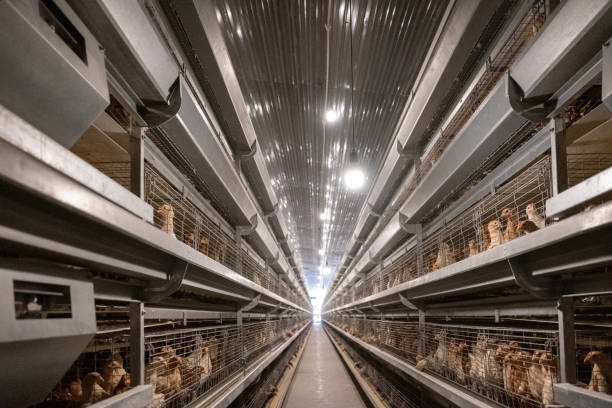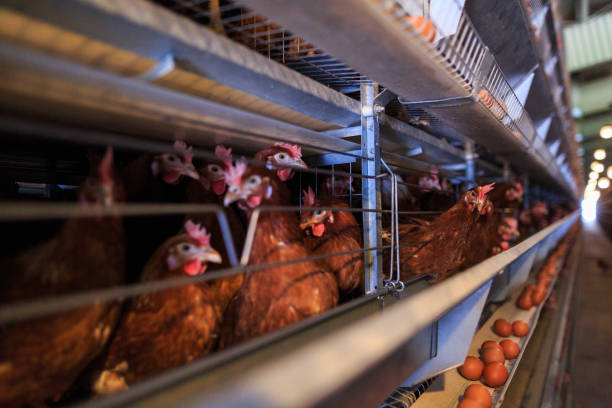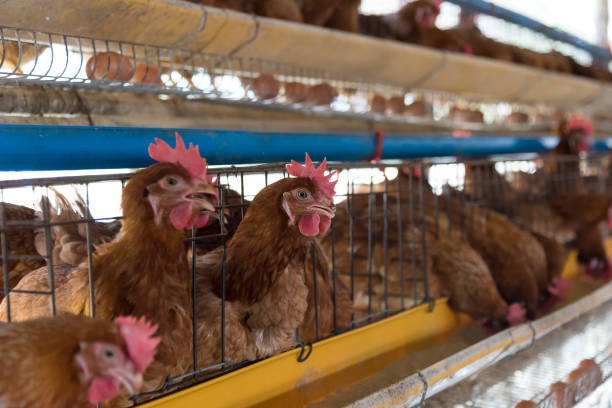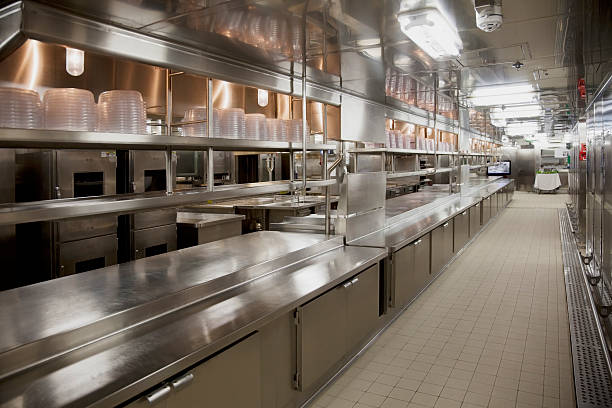
20000 Egg Capacity Battery Cage System: Maximizing Poultry Production in Africa
20000 Egg Capacity Battery Cage System: Maximizing Poultry Production in Africa
Africa’s poultry industry is experiencing significant growth, driven by increasing demand for eggs and chicken meat. To meet this demand, poultry farmers are constantly seeking efficient and cost-effective methods to enhance their production. One solution that has gained considerable traction is the battery cage system, particularly those with a large capacity, such as the 20,000 egg capacity system. This article explores how such systems can maximize poultry production in Africa, addressing key benefits, setup considerations, operational practices, and economic impacts.
**Understanding Battery Cage Systems**
Before diving into the specifics of a 20,000 egg capacity system, let’s clarify what battery cage systems entail. These systems involve housing chickens in small, wire-mesh cages, typically arranged in rows and tiers. This allows for a high density of birds in a limited space, maximizing land use. The cages are designed to facilitate easy access to food and water, along with efficient manure removal.
*Key components of a battery cage system include:*
* **Cages:** Typically made of galvanized steel wire mesh, providing durability and hygiene.
* **Feeding System:** Automated feeding troughs that distribute feed uniformly to all cages.
* **Watering System:** Nipple drinkers provide a constant and clean water supply.
* **Manure Removal System:** Automatic scrapers or conveyor belts to remove manure efficiently.
* **Ventilation System:** Fans and ventilation openings to maintain optimal air quality.
* **Egg Collection System:** Automated or manual egg collection mechanisms.
**Benefits of a 20,000 Egg Capacity Battery Cage System in the African Context**
A 20,000 egg capacity battery cage system offers several advantages for poultry farmers in Africa, contributing to increased productivity and profitability.
* **Increased Egg Production:**

The primary benefit is the sheer volume of egg production. Housing 20,000 chickens in a controlled environment significantly boosts the total number of eggs produced. This is particularly beneficial in regions where egg demand is high, and supply struggles to keep up. Optimizing space also means you can house more chickens per square meter compared to free-range or deep litter systems.
* **Efficient Land Use:**
In many parts of Africa, land is a precious commodity. Battery cage systems allow farmers to maximize their output on limited land. Housing a large number of birds vertically reduces the need for expansive land areas, which can be a significant advantage for farmers with limited resources.
* **Improved Disease Control:**
Battery cage systems facilitate better hygiene and disease control. The separation of birds into individual cages minimizes the spread of diseases. Regular cleaning and disinfection routines can be implemented more effectively. Furthermore, the controlled environment reduces exposure to external pathogens, leading to healthier flocks and reduced mortality rates.
* **Reduced Labor Costs:**
Automated systems for feeding, watering, manure removal, and egg collection minimize labor requirements. This not only reduces operational costs but also allows farmers to focus on other critical aspects of farm management. In regions where labor costs are high, this can significantly impact profitability.
* **Enhanced Egg Quality:**
The controlled environment of battery cage systems helps maintain consistent egg quality. Factors such as temperature, humidity, and light can be regulated to optimize egg production and quality. Cleaner eggs are produced due to the efficient manure removal system, reducing the risk of contamination.
* **Better Monitoring and Management:**
With a structured cage system, it is easier to monitor individual bird health and productivity. Farmers can quickly identify and address any health issues, ensuring the well-being of their flock. Data collection and analysis become more streamlined, allowing for more informed decision-making.
* **Protection from Predators and Harsh Weather:**
Battery cage systems provide a secure environment, protecting chickens from predators and adverse weather conditions. This is especially important in regions where poultry farms are vulnerable to animal attacks or extreme weather events, which can lead to significant losses.
* **Higher Feed Conversion Ratio:**
Battery cage systems can optimize feed conversion ratios. Chickens expend less energy in movement and foraging, allowing them to convert feed more efficiently into eggs. This can result in lower feed costs and improved profitability.
**Setting Up a 20,000 Egg Capacity Battery Cage System**
Setting up a large-scale battery cage system requires careful planning and execution. Here are the key steps involved:
* **Site Selection:**
Choose a site that is accessible, has a reliable water and electricity supply, and is away from residential areas to minimize disturbance. The site should have good drainage to prevent waterlogging, and adequate space for future expansion is also worth considering.
* **Infrastructure Development:**
Construct a sturdy and well-ventilated poultry house to protect the cage system from the elements. The house should be designed to accommodate the specific dimensions of the battery cage system. Proper insulation can assist temperature regulation, leading to more stable egg production.
* **Cage System Installation:**
Install the battery cage system according to the manufacturer’s instructions. Ensure that all components, including feeding, watering, manure removal, and egg collection systems, are properly installed and functional. Leveling the cages will ensure even distribution of eggs and ease of maintenance.
* **Ventilation System Setup:**
Install an efficient ventilation system to maintain optimal air quality. Fans and ventilation openings should be strategically placed to provide adequate airflow throughout the poultry house. An effective ventilation system minimizes ammonia buildup and improves the overall living environment for the chickens.
* **Water and Electricity Supply:**
Establish a reliable water and electricity supply for the operation of the battery cage system. Ensure that the water supply is clean and sufficient to meet the needs of the chickens. A backup generator is advisable to prevent disruptions due to power outages.
* **Waste Management System:**
Implement a waste management system to effectively handle manure. This could involve composting, biogas production, or other environmentally friendly methods. Proper waste management is crucial for maintaining hygiene and preventing environmental pollution.
* **Biosecurity Measures:**
Implement strict biosecurity measures to prevent the introduction and spread of diseases. This includes controlling access to the poultry house, disinfecting equipment, and implementing vaccination programs. Biosecurity is paramount for maintaining a healthy flock and preventing economic losses.
**Operational Practices for Maximizing Production**
Once the battery cage system is set up, efficient operational practices are essential for maximizing egg production.
* **Feeding Management:**
Provide a balanced and nutritious feed to meet the specific needs of laying hens. The feed should be high in protein, calcium, and other essential nutrients. Monitor feed consumption and adjust the feed formulation as needed. Also, regularly check your feeding system to ensure it is working correctly and distributing feed evenly.
* **Water Management:**
Ensure a constant supply of clean and fresh water. Regularly check the nipple drinkers to ensure they are functioning properly. Water quality should be monitored to prevent contamination.
* **Lighting Management:**
Implement a lighting program to stimulate egg production. The specific lighting requirements will depend on the breed of chickens and their stage of production. Consistent lighting schedules are crucial for maintaining optimal egg-laying rates.
* **Temperature and Humidity Control:**
Maintain optimal temperature and humidity levels within the poultry house. Provide adequate ventilation to remove excess heat and moisture. Use heaters or coolers as needed to maintain a comfortable environment for the chickens.
* **Health Management:**
Implement a comprehensive health management program to prevent and treat diseases. Regularly vaccinate the chickens against common poultry diseases. Monitor the flock for signs of illness and take prompt action to address any health issues.
* **Manure Management:**
Regularly remove manure from the poultry house to maintain hygiene and prevent the buildup of ammonia. The manure can be used as fertilizer or processed for biogas production.
* **Egg Collection and Handling:**
Collect eggs regularly to prevent breakage and contamination. Handle eggs carefully to maintain their quality. Store eggs in a cool and clean environment. Automated egg collection minimizes the risk of damage and contamination.
* **Record Keeping:**
Maintain detailed records of egg production, feed consumption, mortality rates, and other relevant data. Analyze the data to identify areas for improvement and make informed management decisions.

**Economic Impacts and Sustainability**
A 20,000 egg capacity battery cage system can have significant economic impacts on poultry farmers in Africa. Increased egg production leads to higher revenues, improved profitability, and greater financial stability. The system also creates employment opportunities in farm management, maintenance, and related industries.
However, it is important to consider the sustainability of battery cage systems. Environmental concerns, such as waste management and energy consumption, need to be addressed. Implementing environmentally friendly practices, such as composting manure and using renewable energy sources, can mitigate these concerns. Consideration of ethical issues, such as animal welfare, is also crucial. Optimizing cage design and stocking density, providing enrichment opportunities, and ensuring access to outdoor areas can improve animal welfare standards.
**Challenges and Mitigation Strategies**
While battery cage systems offer numerous benefits, they also present certain challenges.
* **High Initial Investment:**
The initial investment in a battery cage system can be substantial. Farmers can explore financing options, such as loans or grants, to overcome this challenge. Phased implementation, starting with a smaller capacity and gradually expanding, can also make the investment more manageable.
* **Disease Outbreaks:**
Despite improved disease control, disease outbreaks can still occur. Implementing strict biosecurity measures, vaccination programs, and regular health monitoring can minimize the risk of outbreaks.
* **Market Price Fluctuations:**
Egg prices can fluctuate due to market forces. Farmers can mitigate this risk by diversifying their products, establishing long-term contracts with buyers, and implementing efficient production practices to reduce costs.

* **Environmental Concerns:**
Waste management and energy consumption can pose environmental challenges. Implementing environmentally friendly practices, such as composting manure, using renewable energy sources, and optimizing ventilation systems, can address these concerns.
* **Animal Welfare Concerns:**
Criticism surrounding animal welfare should be addressed by optimizing cage design and stocking density, providing enrichment opportunities, and ensuring access to outdoor areas.
**Conclusion**
A 20,000 egg capacity battery cage system presents a viable solution for maximizing poultry production in Africa. By offering increased egg production, efficient land use, improved disease control, and reduced labor costs, these systems can significantly enhance the profitability and sustainability of poultry farming operations. Careful planning, efficient operational practices, and a commitment to addressing environmental and ethical concerns are essential for realizing the full potential of battery cage systems in the African context. While challenges exist, they can be effectively mitigated through strategic planning and proactive management. Embracing these systems can contribute to meeting the growing demand for eggs, improving food security, and promoting economic growth in Africa.
